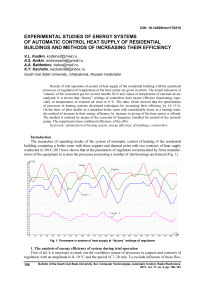Experimental studies of energy systems of automatic control heat supply of residential buildings and methods of increasing their efficiency
Автор: Kodkin V.L., Anikin A.S., Baldenkov A.A., Kachalin A.Y.
Рубрика: Краткие сообщения
Статья в выпуске: 2 т.17, 2017 года.
Бесплатный доступ
Results of trial operation of system of heat supply of the residential building with the optimized processes of regulation of temperature of the heat carrier are given in article. The actual indicators of volumes of the consumed gas for several months 2015 and values of temperature of external air are analyzed. It is shown that “factory” settings of controllers don't ensure effective functioning, especially at temperatures of external air close to 0 °С. The data, which showed that the optimization of processes in heating systems developed techniques for increasing their efficiency by 10-15 %. On the basis of pilot studies in a suburban boiler room with considerable losses in a heating main, the method of increase in their energy efficiency by increase in giving of the heat carrier is offered. The method is realized by means of the converter of frequency installed for control of the network pump. The experiments have confirmed efficiency of the offer.
Optimization of heating system, energy efficiency of buildings, coolant flow
Короткий адрес: https://sciup.org/147155184
IDR: 147155184 | УДК: 620.9:662.92; | DOI: 10.14529/ctcr170215
Текст краткого сообщения Experimental studies of energy systems of automatic control heat supply of residential buildings and methods of increasing their efficiency
The researches of operating modes of the system of automatic control of heating of the residential building containing a boiler room with three coppers and thermal point with two contours of heat supply conducted in 2014–2015 have shown that at the parameters of regulators recommended by firms manufacturers of the equipment in system the processes possessing a number of shortcomings are formed (Fig. 1).
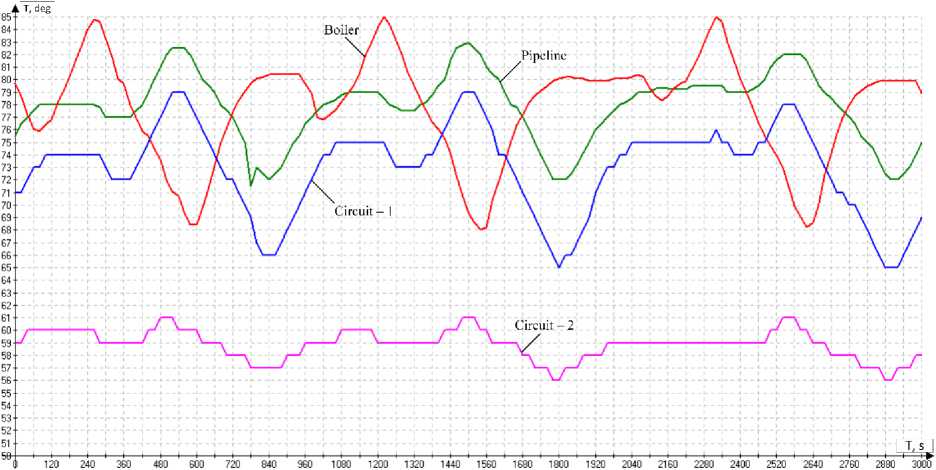
Fig. 1. Processes in system of heat supply at “factory” settings of regulators
1. The analysis of energy efficiency of system during trial operation
First of all, it is necessary to mark out the oscillatory nature of processes in coppers and contours of regulation with an amplitude to 8–10 °С and the period of 7–20 min. To exclude influence of these fluc- tuations on temperature in rooms and not to allow her decrease, temperature in contours was overestimated, and in a boiler room, as a rule, process reached maximum admissible values of temperature of the heat carrier [1]. At the same time, naturally, level of consumption of energy resources rather high, and therefore, system effectiveness very low.
The a n a ly sis of c on sumpti on of g a s in th is sy ste m f or s e v e r a l months 201 4 –2015 is carried out. Charts of temperature o f exte rna l a ir and the volume of the gas consumed per days a r e p r ov ided on the diagrams (Fig. 2) and in the T abl e 1. T h e a n a ly sis ha s shown, at T av ≈ 0 °С (March 2014, October 2015) and at T av ≈ –10 °С ( F e brua ry 20 15, November 2015) volumes of the consumed g a s di f f er slightly – 64,6·103; 50,3·103; 72,2·103; 76, 1 ·103 m3 respectively. I.e. system effectiveness at low temperatures (–10° below) i s si gni f ica n tl y hig he r , t ha n a t a mbie nt t empe r a tur e clos e t o 0 °С. It testifies to bad indicators of system of regulation.
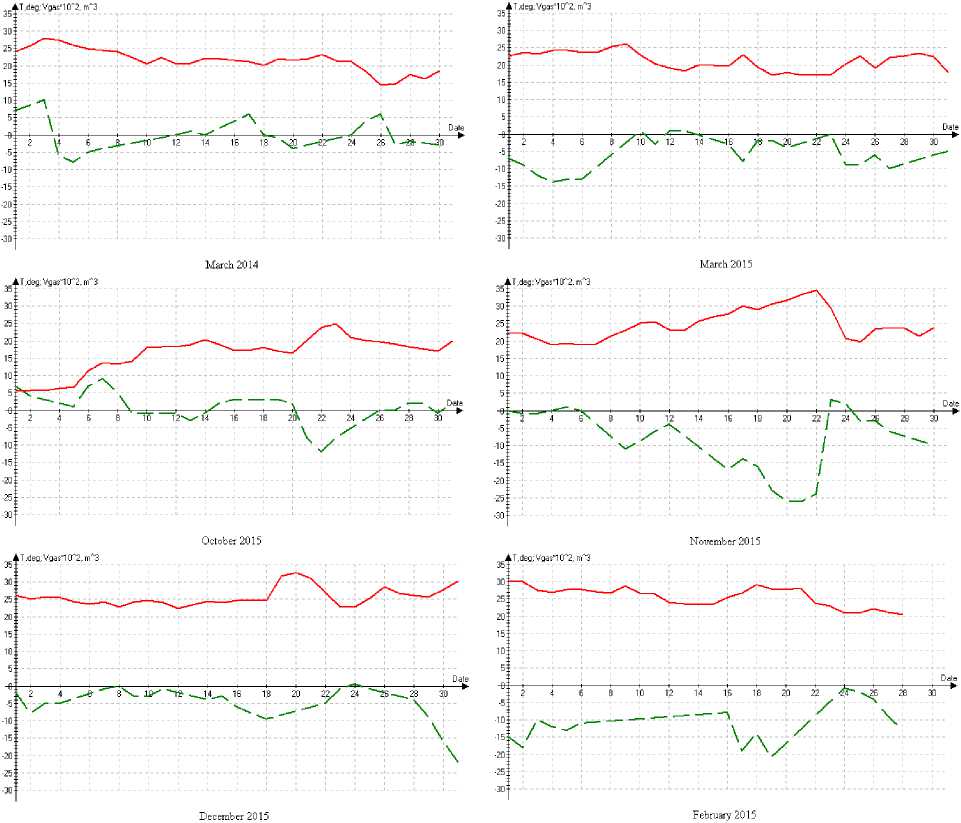
Fig. 2. The average daily temperature and the volume of gas consumed per day
Table 1
Summary table consumption of gas and average daily temperature of external air on months
|
M a rc h 2 014 |
February 2015 |
March 2015 |
October 2015 |
November 2015 |
December 2015 |
|
|
Gas consumption in a month, m3 |
64 6 51,2 |
72 249,6 |
63 321,5 |
50 307,7 |
76 183,8 |
80 100,4 |
|
Average daily temperature in a month, °C |
0 |
–10,15 |
–5,39 |
+2 |
–8,678 |
–4,876 |
Краткие сообщения
Wor k s on op timiza ti on of pr oc esses of regulation of temperature of the heat carrier [1], which have re duce d a mpli tudes of f lu c t ua t ions o f t e mpe ra tu r e t o 1–2 °С and have allowed increasing system effectiveness (Fig. 3) are carried out.
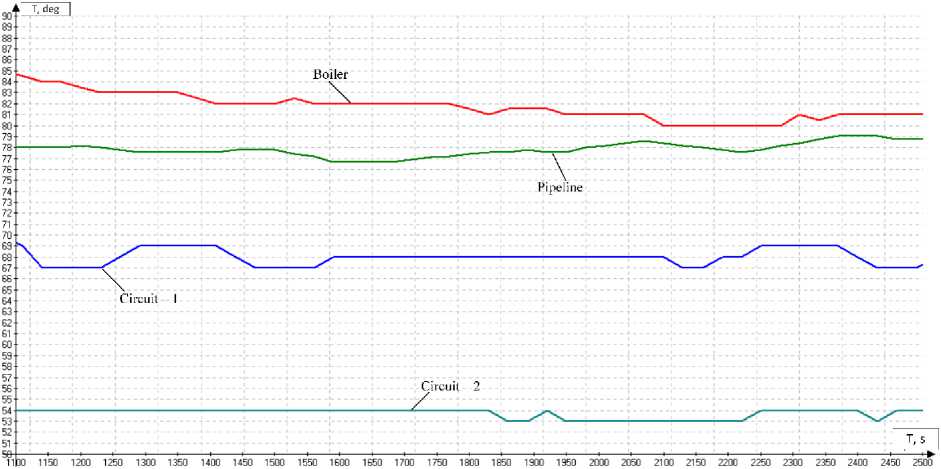
Fig. 3. Processes in the optimized system
So, from March 1 t o Mar ch 15, 2015 a v e r age a i r temperature –6 °С and consumption of 2,38·103 m3 per day , a nd a fter opt imiza tion of sy st e m of he a t sup pl y – from March 15 to March 31, 2015 –5 °С, and 1,84·103 m3 per day, ac cording to ( F ig . 4, Table 2). At the same time, as shown in [1] there is an opport uni ty to r educe hea t ca rr i e r te mpe r a t ur e in c ont our s a n d in a boi ler r oom ( F ig . 3) .

Fig. 4. The average temperature of the outside air and the gas volume consumed per day before and after optimizing the system parameters
Table 2
Consumption of gas and average daily temperature of external air in March 2015 before and after optimum setup of the regulator
|
Consumption of gas, m3/day |
Average daily temperature, °C |
|
|
On March 1 – on March 15 (before change of settings) |
2380 |
–6,3 |
|
On March 16 – on March 31 (after change of settings) |
1840 |
–4,9 |
Thus the analysis of trial operation of system of heat supply has shown that optimization of work of contours can give effect comparable with introduction of systems of the combined heating [2], and sys- tems of heat supply with control of air temperature in rooms [2] which, certainly, are effective, but are a little suitable for housing-and-municipal city systems of heat supply.
2. Improving energy efficiency by increasing coolant flow
I n expe r ime nta l stud ies in a s uburban boiler, where the essential loss in hea ti n g ma ins, ins tall e d anoth e r op portun ity to im pr ov e the efficiency of heat supply systems. It is kn own that t he a moun t o f he at t r a ns f er r ed to t he o b j e ct pr o portio na l to t he t emperature and volume of the heat transfer agent to t he ob jec t ( 1) , a nd thi s v olu me is de ter mine d by the e lec tric d r iv e o f pumps.
Q = V p( h 7 - h X), (1)
where Q – amount of he a t tr a ns f er re d to sy stem; V – volume of the heat transfer agent to the object; h7, h X - an e n thalpy of t he he a t tra ns f er a g e nt d e par t in g in ne twor k a nd e nt e ring .
B y incr e asing t he c ool a nt flow ra te by 10 % it is possible to reduce the temperature by 10 % and t he re by r e du c e the loss in h e a t ing duc t ( whi c h i nc re a s e with increasing flow temperature) and the boiler resource consumption.
B e s ides, a s a r u le , i t i s c on sid ered that the pump electric motor working directly f r om ne twor k o r v ia of th e S o f t Sta rt De v ic e ( S S D) doesn’t maintained a constant rotation speed with a su f ficient accura cy. At c ha ng e of lo a di ng ( volume o f giving of the heat carrier) the speed of rotation of the e l e ctric moto r of the pump can decrease by 5–10 %, reducing overall performance of a complex. Installation of t he conv e r t e r o f fr e q ue nc y e quipp e d with the special control algorithms providing the accuracy of main t e na n c e o f sp e e d o f rotati o n of t he engine of the pump at changes in a hydrauli c sy ste m a t t he l e v e l of 1 % [ 3 ] c an in c re a se sig n ific a n tly sy ste m e f fe c t iv e ness in g e ne r al.
Researches in syst em of he a t i ng of the suburban settlement are conducted. T hey ha v e shown tha t i ns ta l latio n of th e c onv e rt e r o f frequency with an algorithm of stabilization of spee d o f rotati on o n t he n e two r k pump ha s a ll o we d to stabi lize a h e at c ar rie r e xpense , t o incr e ase it concerning an expense ac c o r ding to the standar d s c he me and to increase amount of the transferred heat wit hou t i nc re a s e in t e m p e r ature o f the he at c a rr i e r. I nc r e a s e in sp e e d of r o tat ion by 4 –6 % has allowed to increase amount of the transferred heat by 5–10 % ( Fig . 5) .
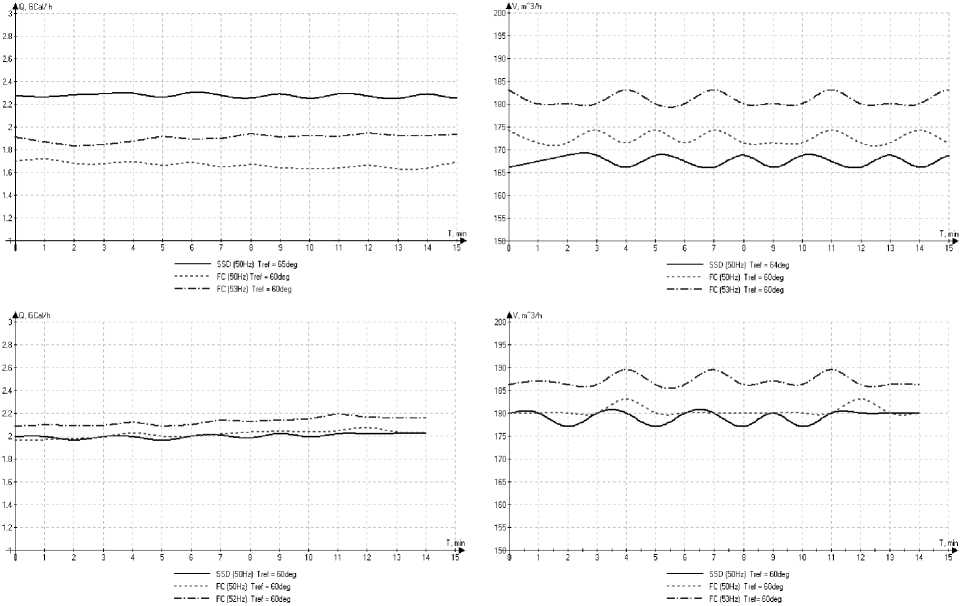
Fig. 5. The amount of heat transferred (Q) and the coolant flow rate (V) diagrams
Краткие сообщения
Conclusions
Trial operation of two various systems of heat supply has shown that improvement of quality of regulation of temperature of the heat carrier increases energy efficiency of these systems without serious material inputs. However, so far the organizations of technical supervision consider “excess” installation of converters of frequency on network pumps and demands an exception them from projects. Hopefully, in this article the results and further studies will convince these organizations in innovation efficiency.
Список литературы Experimental studies of energy systems of automatic control heat supply of residential buildings and methods of increasing their efficiency
- Оптимизация энергопотребления в тепловых системах/А.Ю. Качалин, В.Л. Кодкин, А.С. Аникин и др.//«Приоритеты мировой науки. Эксперимент и научная дискуссия»: материалы XIII Междунар. науч.-практ. конф. 17-18 июня 2015 г -Часть 1. Естественные и технические науки. -Северный Чарльстон, Южная Каролина, США: CreateSpace, 2015. -С.132-136.
- Вялкова, Н.С. Совершенствование работы комбинированной системы водяного и воздушного отопления общественных зданий: дис. … канд. техн. наук/Н.С. Вялкова. -Пенза: Изд-во ПГУ, 2011. -147 с.
- Аникин, А.С. Динамическая положительная связь в асинхронных электроприводах с частотным управлением/А.С. Аникин, В.Л. Кодкин, А.А. Балденков//материалы XIII Междунар. науч.-практ. конф. 17-18 июня 2015 г -Часть 1. Естественные и технические науки. -Северный Чарльстон, Южная Каролина, США: CreateSpace, 2015. -С. 115-119.

